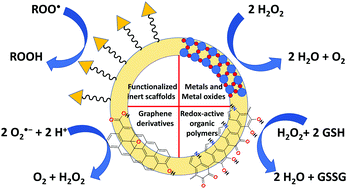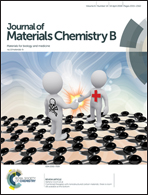Antioxidant activity of nanomaterials
Abstract
Nanomaterials represent one of the most promising frontiers in the research for improved antioxidants. Some nanomaterials, including organic (i.e. melanin, lignin) metal oxides (i.e. cerium oxide) or metal (i.e. gold, platinum) based nanoparticles, exhibit intrinsic redox activity that is often associated with radical trapping and/or with superoxide dismutase-like and catalase-like activities. Redox inactive nanomaterials can be transformed into antioxidants by grafting low molecular weight antioxidants on them. Herein, we propose a classification of nanoantioxidants based on their mechanism of action, and we review the chemical methods used to measure antioxidant activity by providing a rationale of the chemistry behind them.

- This article is part of the themed collection: Recent Review Articles


 Please wait while we load your content...
Please wait while we load your content...